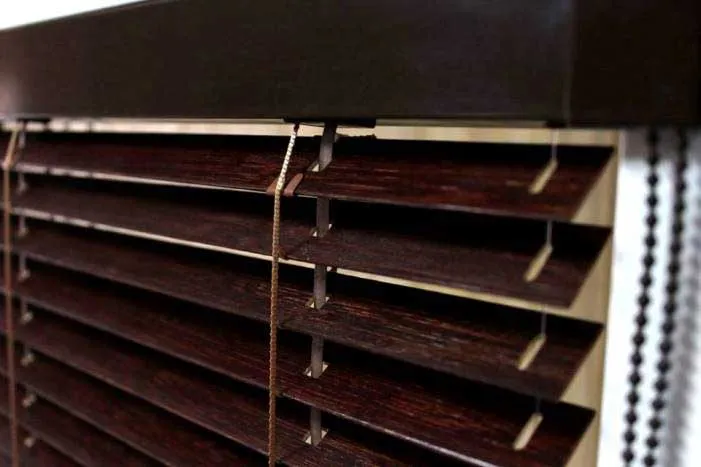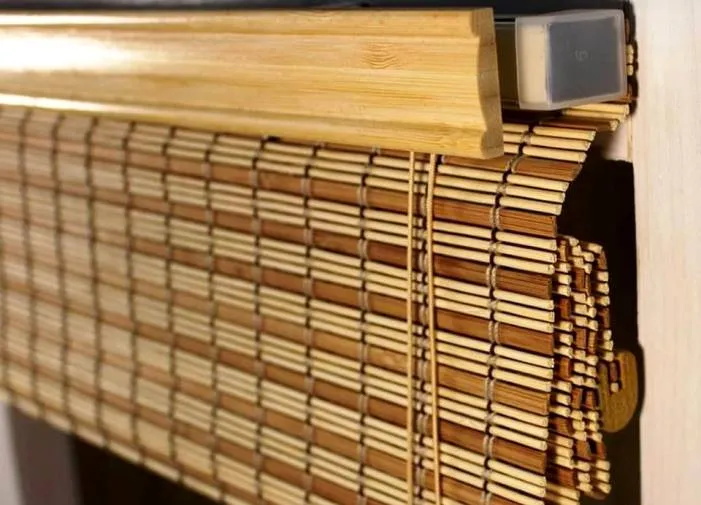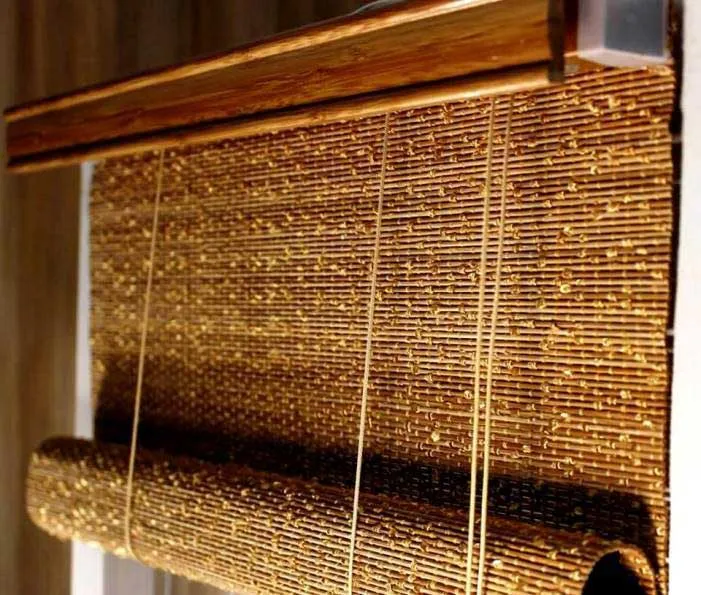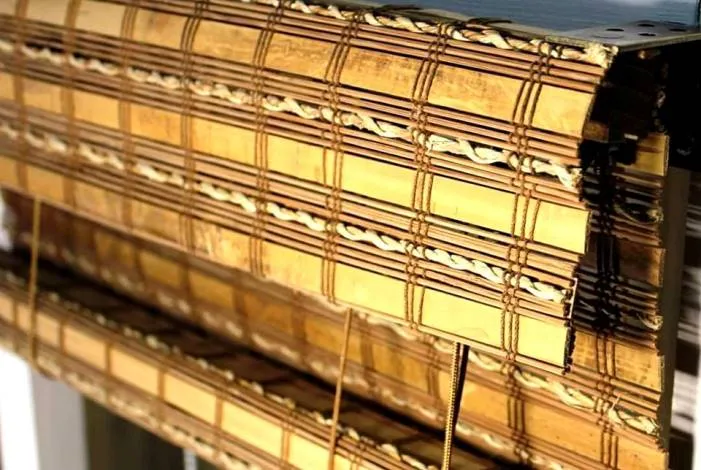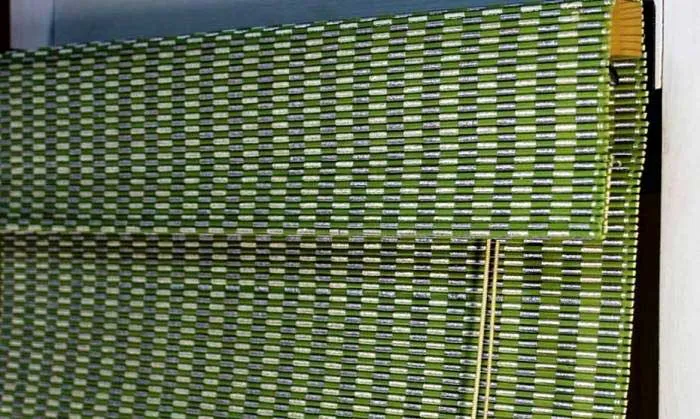Blinds made of natural wood are not only an element of sun protection, but also an excellent means of decoration. It's no secret that wooden interior elements give the room a classic appearance and are highly valued. That is why private specialists’ offices and home offices are often decorated with a large number of natural materials to show the owner’s status and taste for luxurious things. Blinds are one of these elements; they have a unique appearance, the texture of natural wood is visible on the slats and, complete with wooden groovers, the products look holistic and harmonious, especially in a classic interior. But despite their status, modern wooden blinds are not without new technologies. The materials used for blinds are modern, for example, the cornice is made of aluminum and the mechanisms take into account modern trends. Thanks to the presence of modern design elements, wooden blinds have a long service life and retain their original appearance throughout their service life.
Wooden blinds design
Wooden blinds are made from natural wood and bamboo for a variety of textures and materials.
For the production of blinds, slats with a width of 25mm and 50mm are used, depending on the required tasks, certain product options are used.
When processing the lamellas, they are coated with a special varnish with ultraviolet protection. This varnish is specially designed for high temperatures and additionally protects the wood from fading in the sun. Additional protection is applied for several purposes, to protect the slats from moisture, dust and direct sunlight. Since blinds must act as sun protection, it is logical that they are exposed to the sun for a long time and can get quite hot, so natural materials require an additional level of protection from heating and fading.
The disadvantages of natural wood include weakness to a humid environment; with high humidity, the wood swells and loses strength. Of course, the paint coating protects the wood from weather conditions, but it is not recommended to install blinds in a bathhouse or in an environment with constant high humidity.
The design of wooden blinds uses two options for fixing the slats, a standard ladder and braid.
The braid is used only in wooden blinds and is not used in other types of products. A standard ladder looks like a system of threads, which are arranged in the form of a ladder at a certain distance from each other, due to which the distance between the slats is maintained and the blinds have no gaps in the closed position.
The tape works in a similar way, but there is a wide tape running along the front and back of the blinds, it covers the holes in the slats, thereby reducing the gaps. You can also choose the color of the braid separately and create your own unique combination of lamellas and braid. As a standard, braid is used in a color as close as possible to the shade of the lamellas, but contrastingly light braid with dark or dark with light lamellas can also be used. This highlights the braid and creates interesting geometric shapes of the product. The braid itself becomes the highlight of the blinds and beautifully highlights the products against the background of the windows.
Fixing wooden blinds
To fix products, methods similar to aluminum systems are used, but the fittings are different. Since wood has its own texture, it is difficult to choose fittings that match the color of the products. Therefore, wooden blinds use universal transparent fasteners that are suitable for any color of the product. Fixation systems are used to fasten blinds in the plane of the shutters; this is required if the blinds are installed on swing-out shutters and do not dangle when opened.
Bottom fixation - a special side plug is installed on the bottom weight bar, which allows you to fix the bottom bar in special latches, which in turn are mounted on the window frame. Thus, the blinds are fixed in the upper part on the eaves, and at the bottom with the help of special clamps, the product does not dangle.
String - For complete fixation, wooden blinds use a string system. A special cable passes through each individual lamella, which is fixed at the bottom of the blinds. The cable is under slight tension, so it does not sag and keeps the slats in the plane of the window.
At the top of the wooden blinds there is an aluminum cornice, since wood is a fairly heavy material; a modern cornice is used in it to ensure a long service life of the product. To make the blinds look good, a groover is installed on them, this is a decorative overlay that covers the aluminum cornice and gives the product a completely natural look. The groover is matched to the color of the lamellas, but you can choose other materials for contrast. For example, to create contrast, you can use a light groover and braid in dark lamellas; this will give an unusual appearance to the product. If the color of the trim and the tape does not change, then the blinds are made completely in one color.
Materials for lamellas
Slats are thin horizontal strips from which blinds are assembled; it is the slats that protect the room from the sun and give the product its main appearance. Slats for blinds can be of different widths, 16mm, 25mm and 50mm, depending on the materials; wooden slats are made only 25mm and 50mm wide, this is due to the characteristics of the materials.
Slats for wooden blinds can be made of natural wood or bamboo; these materials are successfully used in blinds and perform well.
The wood is quite dense and hard; it is coated with a special varnish that protects the slats from ultraviolet radiation and, accordingly, from fading.
Bamboo has slightly different characteristics from wood; it is lighter than wood and less susceptible to high humidity, so it can better withstand prolonged humidity without deformation. Also, due to their lighter weight, bamboo blinds reduce the load on the mechanisms, thereby extending their service life.
How to care for wooden blinds
To care for wooden blinds, it is not recommended to use wet cleaning, even though the slats are varnished, but excess moisture can spoil the wood or the slats will lose their shape, and this is very important for blinds in which the slats must be even. In addition, the use of cleaning agents (especially solvents) and abrasive powders is not recommended, so as not to damage the paintwork on the lamellas.
To clean blinds, it is best to use a dry cloth or vacuum cleaner; this will help get rid of dust that may settle on the slats.
